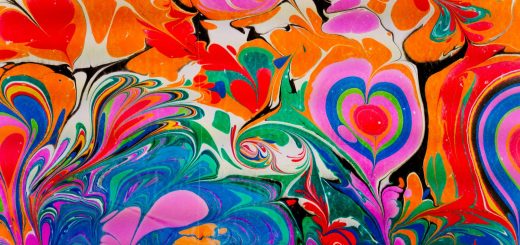Wheat – Color Meaning and Symbolism

Before diving in, please note: This post is for informational purposes only. If you’d like to know more about how we approach topics, feel free to check out our friendly Disclaimer Page.
Hey there, amazing readers! 🖐️ Just a quick note: yes, we know there are a lot of ads here. Trust us, we get it—it’s not the prettiest look, but they help us keep this blog alive and kicking. Those pesky little ads cover the costs of all the behind-the-scenes magic, from hosting and tech stuff to creating content we hope you’ll love.
We’re committed to delivering quality posts, and your support (even just sticking around despite the ads) means everything to us. So, bear with us, and thanks for helping us keep the good vibes rolling. Now, on to the fun stuff! 😉
TRANSLATE BUTTON AT THE END OF THE ARTICLE
Wheat – Color Meaning and Symbolism: An Introduction
Wheat, a staple crop for centuries, holds significant meaning and symbolism in various cultures around the world.
This article explores the various aspects of wheat’s symbolism, delving into its cultural significance, religious associations, and its connection to prosperity and sustenance.
Understanding the color meaning and symbolism of wheat can provide valuable insights into its historical and cultural importance.
Cultural Significance of Wheat: A Brief Overview
Wheat has played a vital role in human civilization, serving as a primary source of sustenance and livelihood.
In many cultures, the cultivation and harvesting of wheat symbolize the cycle of life, fertility, and abundance.
Wheat fields are often associated with the idyllic countryside, representing the bountiful rewards of hard work and agricultural prosperity.
The cultural significance of wheat is deeply ingrained in our collective consciousness, evoking feelings of warmth, comfort, and prosperity.
The Symbolism of Wheat in Different Cultures
Wheat holds diverse symbolism in different cultures across the globe.
In ancient Greece, wheat was associated with Demeter, the goddess of agriculture and fertility.
Wheat represented growth, abundance, and the promise of a plentiful harvest.
In Chinese culture, wheat symbolizes wealth and prosperity, often displayed during festivals and celebrations to attract good fortune.
Native American tribes also hold wheat in high regard, associating it with the sustenance of life and the interconnectedness of nature.
Wheat as a Symbol of Prosperity and Abundance
The symbolism of wheat as a representation of prosperity and abundance is prevalent in many societies.
The golden color of ripened wheat is often associated with wealth and success.
In art and design, incorporating wheat motifs can evoke a sense of opulence and well-being.
Wheat wreaths and sheaves are commonly used as decorative elements, symbolizing a fruitful and prosperous life.
The symbolism of wheat as a source of abundance transcends cultural boundaries and remains a powerful symbol of prosperity.
Wheat in Religious Symbolism and Rituals
Religion often utilizes the symbolism of wheat to convey profound spiritual meanings.
In Christianity, wheat is a symbol of the Eucharist, representing the body of Christ.
Wheat also symbolizes the resurrection and eternal life.
In Judaism, wheat plays a crucial role during the festival of Passover, where unleavened bread made from wheat flour is consumed to commemorate the Israelites’ hasty departure from Egypt.
The spiritual associations of wheat in religious rituals showcase its significance as a symbol of nourishment and divine presence.
Wheat and its Connection to Harvest and Sustenance
The connection between wheat and harvest is deeply rooted in agricultural societies.
Wheat’s symbolism as a crop that sustains human life is prevalent in many cultures.
The harvesting of wheat signifies the culmination of hard work, patience, and the rewards of a successful agricultural season.
Wheat fields, with their golden hues, evoke a sense of abundance and gratitude for the sustenance it provides.
The cycle of planting, growing, and harvesting wheat represents the cyclical nature of life and the interconnectedness of humanity with the earth.
Conclusion
Wheat’s symbolism and cultural significance span across different cultures and time periods.
From representing prosperity and abundance to symbolizing fertility and sustenance, wheat holds a special place in human history.
Its golden color and its association with harvest and religious rituals further enhance its symbolism.
Understanding the meaning and symbolism of wheat helps us appreciate its importance in various aspects of human life and culture.
As we continue to cultivate and cherish this staple crop, let us remember the profound symbolism it carries, reminding us of our interdependence with nature and the abundance it provides.

The Enlightenment Journey is a remarkable collection of writings authored by a distinguished group of experts in the fields of spirituality, new age, and esoteric knowledge.
This anthology features a diverse assembly of well-experienced authors who bring their profound insights and credible perspectives to the forefront.
Each contributor possesses a wealth of knowledge and wisdom, making them authorities in their respective domains.
Together, they offer readers a transformative journey into the realms of spiritual growth, self-discovery, and esoteric enlightenment.
The Enlightenment Journey is a testament to the collective expertise of these luminaries, providing readers with a rich tapestry of ideas and information to illuminate their spiritual path.
Our Diverse Expertise 🌟
While our primary focus is on spirituality and esotericism, we are equally passionate about exploring a wide range of other topics and niches 🌍📚. Our experienced team is dedicated to delivering high-quality, informative content across various subjects ✨.
To ensure we provide the most accurate and valuable insights, we collaborate with trusted experts in their respective domains 🧑🏫👩🏫. This allows us to offer well-rounded perspectives and knowledge to our readers.
Our blog originally focused on spirituality and metaphysics, but we’ve since expanded to cover a wide range of niches. Don’t worry—we continue to publish a lot of articles on spirituality! Frequently visit our blog to explore our diverse content and stay tuned for more insightful reads.







